| New England always confuses us because the names are
familiar but the juxtaposition is not. We stopped at Bath which is a major
shipbuilding centre and called in at the Maritime museum.. | 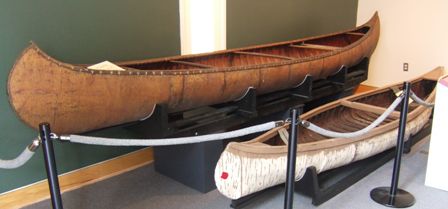 |
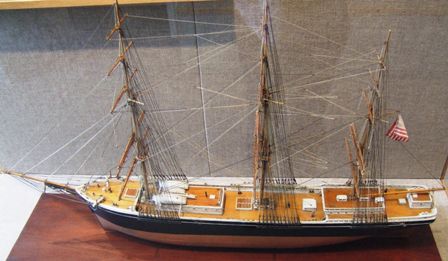 |
We started with the birchbark canoes and the by now inevitable boards of
pioneer settlers along the coast and figures of the revolution. The upper
canoe was built by Daniel Neal in about 1920. He used traditional materials
and methods but made it in a modern way. It cost about the same as a Model T
Ford. The lower canoe is thought to have been built originally by the
Ojibway but has been much repaired over the years.
Then it was on to the ship models. This area was famous for the fine
sailing ships it built. |
| This is the "Eleanor", 203ft long and rigged as a
barque she weighed 1136 tons and was built at Bath Iron Works.. | 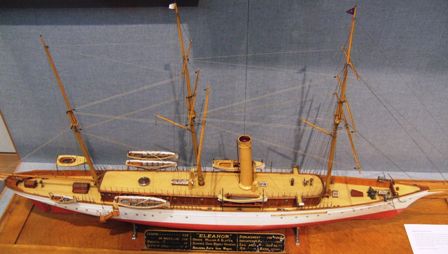 |
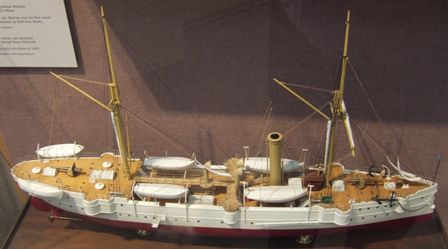 |
This is the gunboat "Machias". Built in 1893 she was the first boat built
entirely at Bath Iron Works. The model dates from 1895. She led a very
active life all over the world serving in China up the Yangtse River, Cuba,
Columbia and Gibraltar. She was decommissioned in 1919 and sold to the
Mexican Navy where she served until 1935. |
| This is one of the best known Maine passenger steamers
travelling from Bath to Boston. The "Ransom B Fuller" was built in 1902. She
was 317ft long and weighed 2316 tons. She served as a troop barracks for
part of the first world war. | 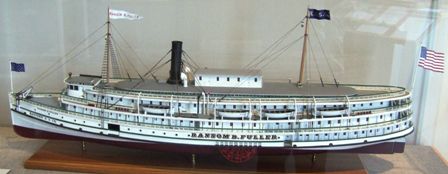 |
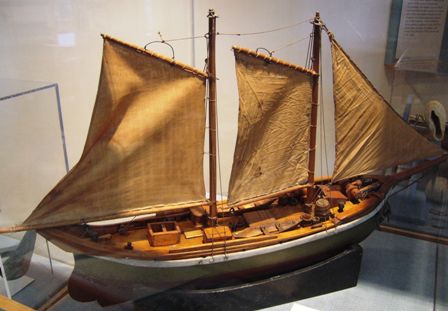 |
This is a model of a typical fishing schooner for the Grand Banks off
Newfoundland. |
| The shipyard carried on building small ships like this
tanker for coastal traffic. |  |
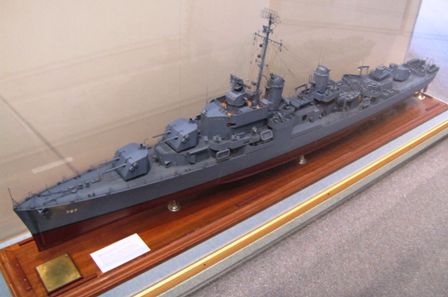 |
And many warships like the USS DeHaven, A 2200 ton Allen M Sumner class
destroyer launched in 1944 to replace an earlier ship of the same name lost
in the battle for Guadalcanal in 1943 after having been completed in this
same dockyard only 133 days previously. She was sold to Korea in 1973 and
finally broken up in 1994. |
| There was a small diorama of the shipyard showing a
five masted schooner, one of the largest of its type ever built (but still
only 2000 tons). This is the "Joseph S Zeman" built at the Percy & Small
shipworks in 1919. This is now the site of the museum and this was almost
the last ship built here. She didn't last long, running aground and sinking
off Metinic Island, Maine in 1922. | 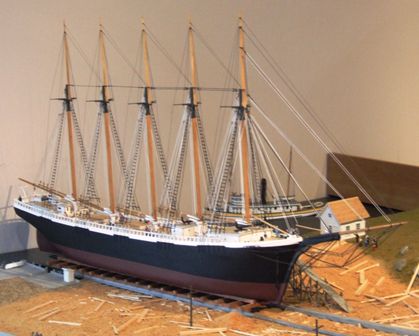 |
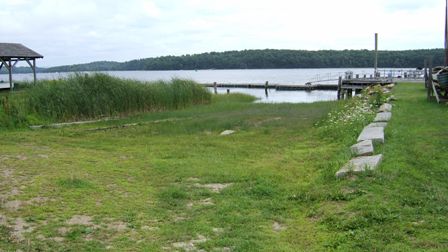 |
This was the site of the north slipway. The ship would be built on blocks
and a runway and slid into the river. Nowadays most ships are built in a
floating dock. |
| These steel sculptures are part of the outline of the
six masted schooner "Wyoming" built here in 1909. The sculpture is a work in
progress. We just have the outline of the bow and stern but will eventually
also have the masts. She was designed to carry 6000 tons of coal and was the
largest ship built at this yard. | 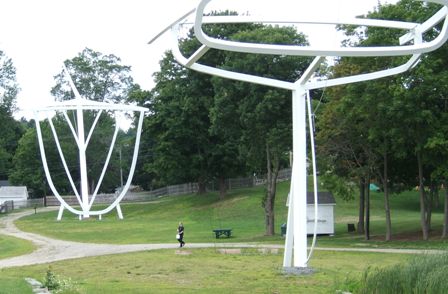 |
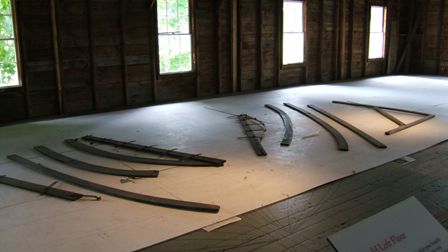 |
Shipbuilding starts in the pattern shop where templates of the intricate
hull shapes are made. |
| This workshop is still in use since they teach
traditional techniques throughout the year. | 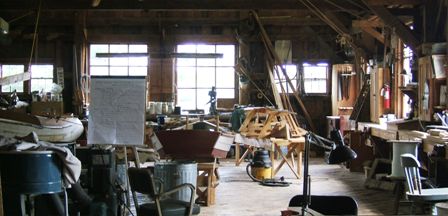 |
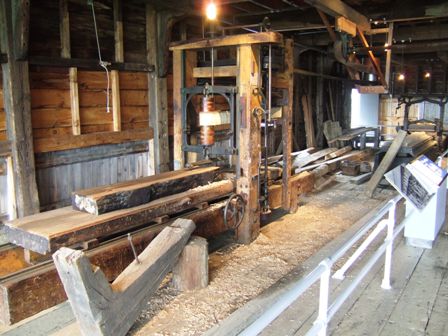 | A
"Daniels" planer with a 43ft table and a 93ft bed which weighs more than
five tons. It can shave up to two inches off a plank in a single pass.
Below are collections of tools from the woodworking and sailmakers
workshops. |
| These are tree nails which were driven into augered
holes in the ships hull planks and the ends split and wedged to hold them
firm. They were generally of white oak or locust wood.. | 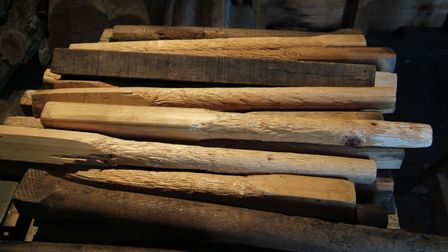 |
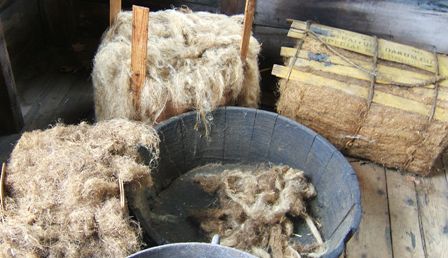 |
Then the gaps in the planks were caulked with hemp to make them watertight
before being coated with pitch . |
| This was the pitch oven when it was heated to make it
flow and fill the cracks. | 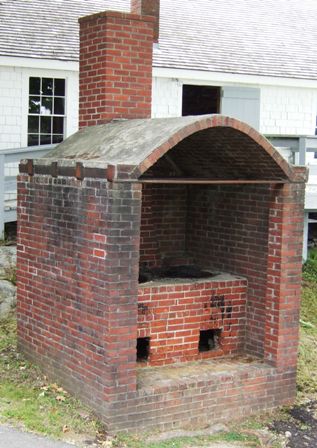 |
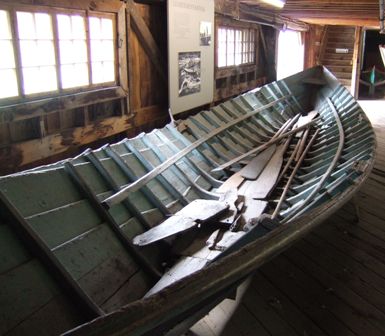 |
This is a lumberman's bateaux used on the Dead river, a tributary to the
Kennebec River. It was used as a work boat to carry supplies by the loggers
and was very light and manoveurable.. |
| There is a display of lobster pots and other
paraphenalia associated with lobster fishing. | 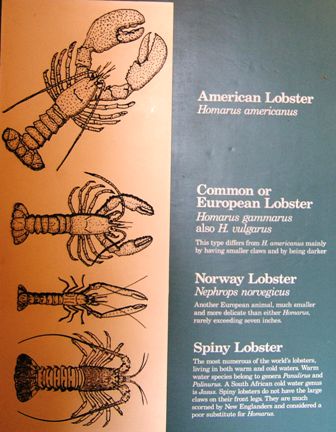 |
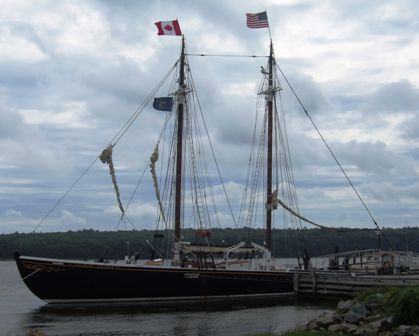 |
Outside on the Kennebec river is mooed the small schooner "Sherman Zwicker"
which we were able to go round. Built at Lunenburg in 1942 she was one of
the last of her typw used for fishing off the coasts of NewFoundland, Nova
Scotia and Maine. Her last fishing trip was in the early 60s and now she
takes part in Tall Ships events. |
| Such vessels were used as bases by the fishermen who
used long lines to catch cod from the Dories which could the be brought on
board and stacked on the deck for the long trip home. | 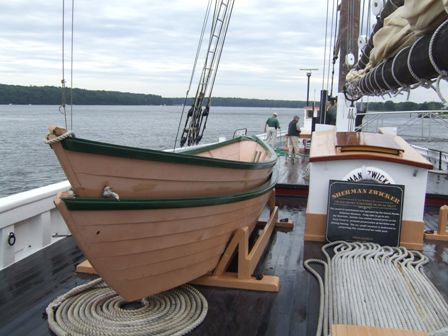 |
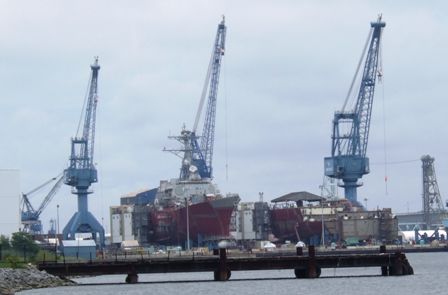 |
Just downriver from the museum is a modern shipbuilding yard building
trawlers, small naval warships and other craft. |
| This is a model of the clipper ship Snow Squall built
in Portland in 1851 for the China and Australia trade. She is the last
American clipper built whose hull can still be seen. She was very fast and
in 1863 outran the confederate raider CSS Tuscaloosa. | 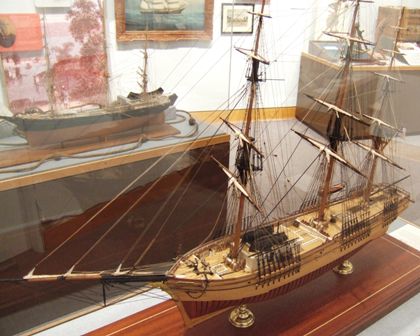 |
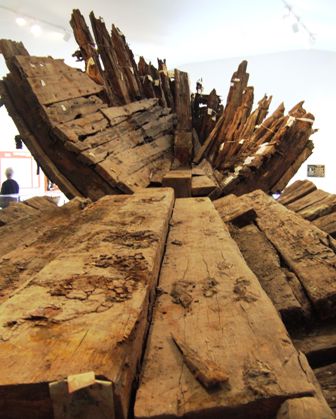 |
In 1864 she was damaged trying to round Cape Horn and ended up at Port
Stanley in the Falkland Islands in distress, and was determined not to be
repairable. There she remained forming part of a wharf. In 1987, after
careful archaeological investigation, part of the bow was removed and
returned to Bath where she now has her own museum building. Many vessels
of this era ended their careers in the Falkland Islands having been badly
damaged trying to round Cape Horn. |
| Particularly fascinating is the copper sheathing which
still remains despite over 100 years in the sea. There is some corrosion but
there is still much that is intact. | 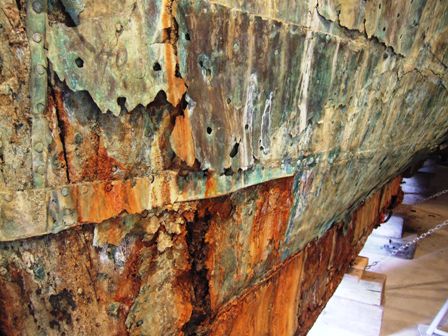 |
|